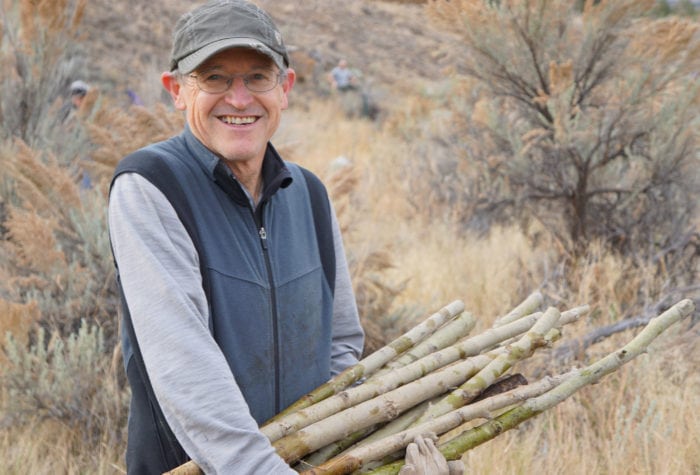Wilderness a decade in the making
With 10,000 acres of undulating terrain, secluded canyons and spectacular views, Spring Basin is magnificent to explore. These public lands, forever protected as wilderness, offer a profusion of desert wildflowers in the spring and year-round recreational opportunities for hikers, horseback riders, hunters and botanists alike.
Framed by the John Day River and the tribally-owned Pine Creek Conservation Area in the northern reaches of Central Oregon, Spring Basin Wilderness is managed to retain its wilderness values, conserve wildlife habitat, and provide opportunities for solitude and quiet recreation.
This was not always the case. Decades ago, ONDA and our partners led a lengthy effort to secure a wilderness designation, the strongest federal conservation designation available for public lands to preserve their natural character, to permanently protect Spring Basin.
Countless hours of community meetings, many iterations of maps and proposed land exchanges to consolidate public and private property, and a decade of intensive community advocacy were required to ensure Spring Basin gained the protections it so richly deserved.
ONDA stood at the forefront of the effort to protect the area and improve access to public lands alongside local farmers and ranchers, the Confederated Tribes of Warm Springs, Wheeler County, and the Oregon Hunters Association.
On March 30, 2009, some ten years after the process began, President Obama signed the Omnibus Public Land Management Act that designated Spring Basin as wilderness. When that news broke, everyone involved in the effort was jubilant, knowing that our shared goal of protecting 10,000 acres of rolling, blossom-filled grasslands overlooking the winding John Day River had finally been achieved.
Ongoing Conservation
Spring Basin Wilderness combined with the Pine Creek Conservation Area and flanked by the John Day Wild and Scenic River, create a nucleus of protected lands and waters that ONDA and partners can expand upon to conserve more of the iconic John Day River Basin.
